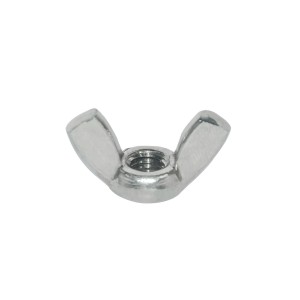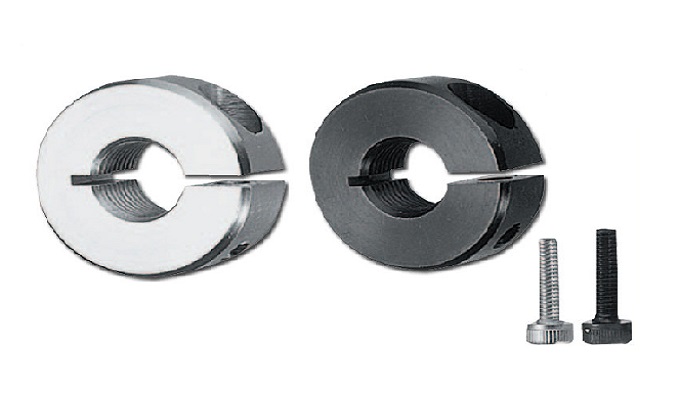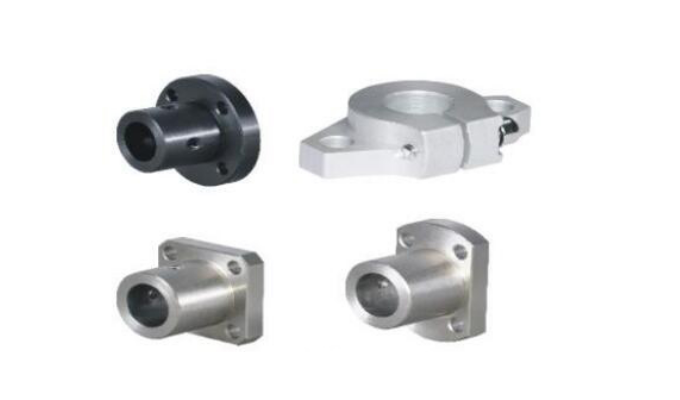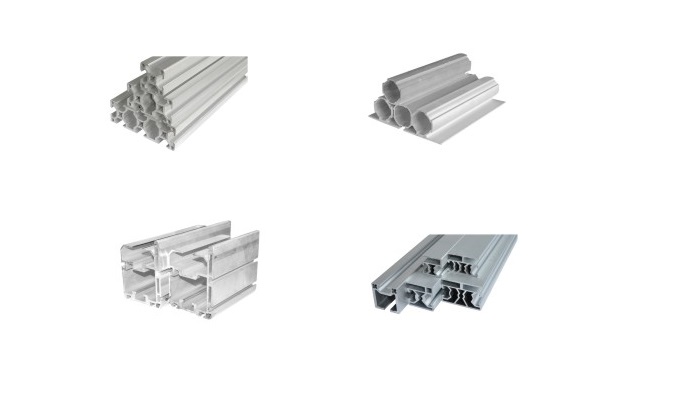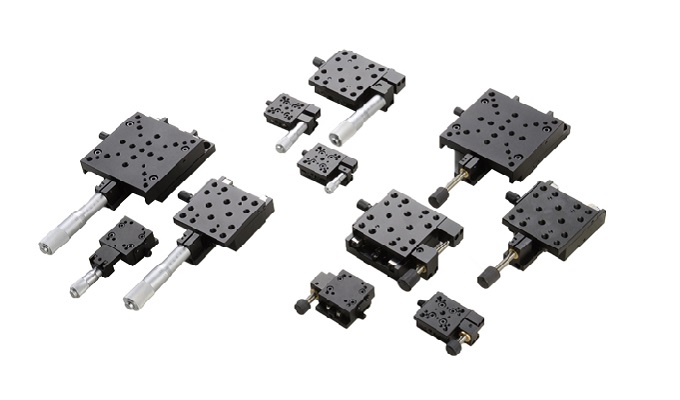Nuts are often used as fasteners in conjunction with screws and can be seen everywhere in daily life. It can be seen from this that the market demand for nuts is indeed considerable. The article is the main types of nuts on the market. Let’s take a look right now!
Ⅰ. Hexagon Head Nut
What is an external hexagonal nut?
The hexagonal nut is mainly used in conjunction with bolts and screws to connect fasteners. According to the nominal thickness, they are divided into three types: type I, type II and thin type. Nuts above grade 8 are divided into two types: type I and type II. Type I nuts are divided into three grades: A, B and C.
Application occasions
Among them, grade A and B nuts are suitable for machines, equipment and structures with small surface roughness and high precision requirements, while grade C nuts are used for machines, equipment or structures with rough surfaces and low precision requirements.
Type II hexagonal nuts are thicker and are mostly used in situations where assembly and disassembly are often required.
Hexagonal Nuts
Ⅱ. Square Nut
What is a square nut?
Because the shape is square, it is also called a square nut, also called a square nut or square nut. The square nut is a kind of welding nut, which uses high temperature to melt a certain metal and then weld it between two products to tighten it.
Application occasions
The fastening effect of this kind of connection will be very good and will not loosen easily. It is widely used in road transportation, home building materials and other industries. Covering almost all fields of fastener needs, it is one of the common mechanical fasteners.

Square Nut
Ⅲ. Flange Nut
What is a flange nut?
Also known as padded nuts, toothed nuts, hexagonal flange nuts, flange nuts, etc., its dimensions and specifications are the same as those of hexagonal nuts, except that its gasket and nut are integrated, and there are anti-slip teeth underneath. The grooves increase the surface area of contact between the nut and the workpiece. Compared with the combination of ordinary nuts and washers, the anti-loosening performance is stronger.
Application occasions
It is mainly used to connect two pipes or between pipes and equipment. Because of its good sealing performance, it is mostly used on pipe connections or workpieces that require an increased nut contact surface to ensure the firmness and sealing of the connection. It can withstand high pressure and high temperature and prevent leakage and loosening.
Flange Nut
Ⅳ. Nylon Nut
What is a nylon nut?
Nylon nuts are made of nylon, also known as plastic nuts. It has the advantages of excellent insulation properties, non-magnetic, heat insulation, light weight, high temperature resistance, high strength, corrosion resistance, etc.
Application occasions
It is often used in various industrial fields, especially the electroplating industry and the communication industry. Compared with ordinary metal nuts, nylon nuts do not produce signal interference such as eddy currents and are suitable for use in communications and other industries. At the same time, they have better acid and alkali resistance and can be used in strong acid and alkali environments in the electroplating industry.
Ⅴ. Fasten the Nut
What is a fastening nut?
A single-button elastic locking nut, often used as an auxiliary nut in double-nut locking structures. Because its weight is only about 5% of ordinary nuts, it is suitable for applications in the aerospace field and related occasions.
Application occasions
Generally, it is not used as the main force-bearing fastener. Its function is to back-tighten the nut to prevent the nut from loosening, that is, it is used as a locking nut. When using, first tighten the connected parts with ordinary nuts, then screw on the fastening lock nut and tighten it by hand so that it contacts the ordinary nut, and then use a wrench to tighten the fastening nut 60° to 90°. When loosening, the hexagonal nut must be tightened. Create a gap between it and the locking nut, and then the locking nut can be loosened.

Fastening Nut
Ⅵ. Cap Nut
What is a cap nut?
As the name suggests, the cap nut is a hexagonal nut with a cover. The main function of the cover is to prevent the exposed part on the outside of the fastener from being covered, so as to prevent moisture or other corrosive substances from entering inside and thus play an anti-rust role, thereby improving its own and The age of the connector. Different sizes of studs use cap nuts of different sizes, and extra-long studs use taller cap nuts. There are also self-locking cap nuts that have twisted threads in the hexagonal area to create a tight friction fit to prevent the nut from loosening due to vibration.
Application occasions
Cap nuts serve the same purpose as hex nuts. Its characteristic is that the main nut is not easy to slide, but it can only be tightened with an adjustable wrench, a dead wrench, a dual-purpose wrench (open part) or a special square hole socket wrench.It is mainly used for rough and simple parts, such as tires and front and rear axles of cars, tricycles, electric vehicles, etc. It can also be used to fix the base of road light stands and some mechanical equipment that are often exposed to sunlight and rain.
Cap Nut
Ⅶ. Slotted Nut
What is a slotted nut?
Slotted nuts mainly refer to hexagonal slotted nuts, that is, slots are machined above the hexagonal nuts. It is used in conjunction with screw hole bolts and cotter pins to prevent the bolts and nuts from rotating relative to each other, see GB6178~6181, etc.Its function is to be used in conjunction with bolts with holes in the rods and insert cotter pins to prevent loosening.
Application occasions
Fix the front and rear axles of the vehicle by tightening the screws passing through the front and rear wheel axles to fix the frame and tires together. In order to prevent the nuts from loosening, a cotter pin must be used to fix it through the slot of the slotted nut, and the cotter pin must be fixed in the slot. The nut must pass through the middle of the axle screw.In practical applications, slotted nuts can be used to connect various mechanical parts, such as bearings, gears, couplings, etc.
Ⅷ. Butterfly Nut
What is a butterfly nut?
Wing nuts are a type of nut with a unique shape, and the protruding curvature of the head resembles a beautiful butterfly. Wing nuts not only look good, but also have great functional applications.Generally speaking, wing nuts can be divided into cold heading wing nuts, cast wing nuts and stamped wing nuts according to their different processing techniques. According to their shapes, they can be divided into square wing wing nuts and round wing wing nuts. a basic shape.
Application occasions
The butterfly nut does not require other tools when used. It is specially designed to facilitate hand-tightening operations. The butterfly-shaped design of the head increases the lateral stress surface, making hand-tightening more efficient. It is mainly used in medical equipment, wind energy, electricity, For equipment that requires frequent disassembly and maintenance such as aerospace, office equipment, petrochemical industry, electronic communications, and shipbuilding industries.
Butterfly Nut
Ⅸ. T-type Nut
What is a T-nut?
A nut that looks like a T to prevent parts from loosening and rotating during installation. T-nuts also come in diamond, square and other shapes. Polished T-nuts without threads are called slim-waisted bolts, which are beneficial to connections subject to variable forces. There are special high-strength bolts on the steel structure, the heads will be larger and the sizes will also change.
Application occasions
It is easy to install and uninstall, and it is easy to install parts at any position, which can greatly improve labor productivity. This is also the reason why T-type nuts can be widely used in the T-type slots of various milling machines.

T-Nut
Ⅹ. Reed Nut
What is a reed nut?
The reed nut is a nut with self-locking function. It is composed of spring steel sheets and standard parts, which can effectively improve the stability and service life of the equipment.
Application occasions
Its main features are its ability to remain stable under vibration, impact and temperature changes, good anti-loosening performance and anti-vibration performance, and is widely used in various equipment.
The above are the types of nuts commonly used in the market. Each nut has its specific performance advantages and applicable application scenarios. Therefore, when selecting a nut, you need to confirm the more suitable one based on specific needs, usage scenarios, and performance requirements.





